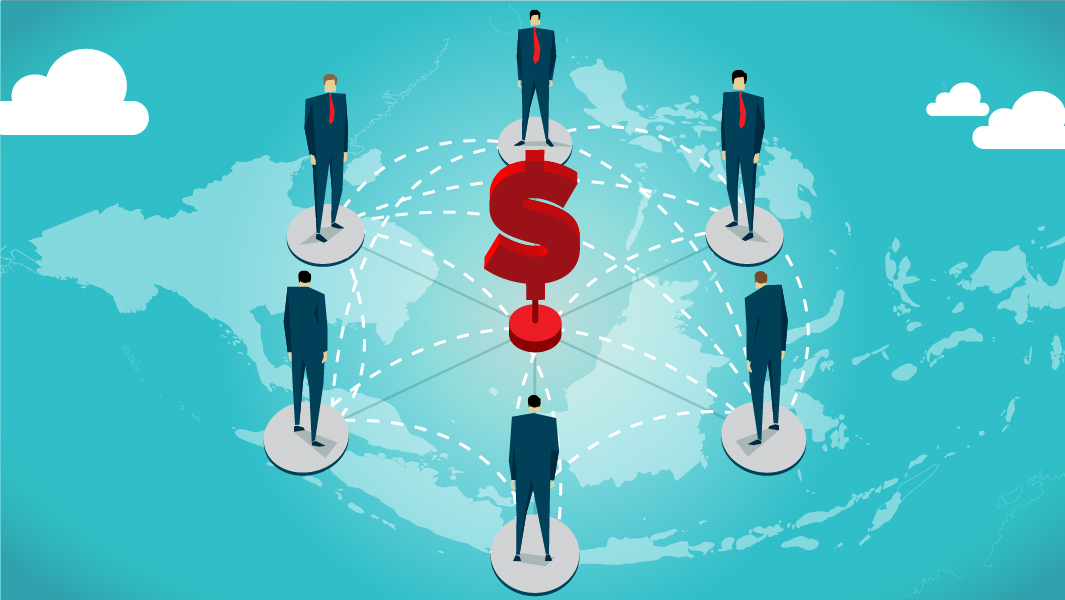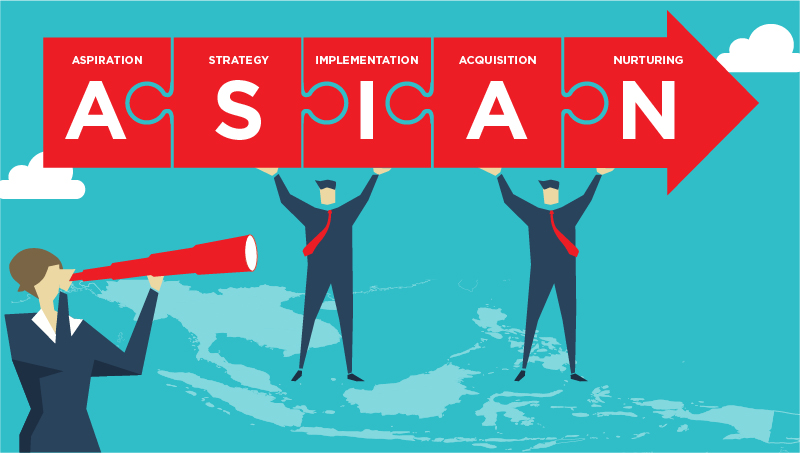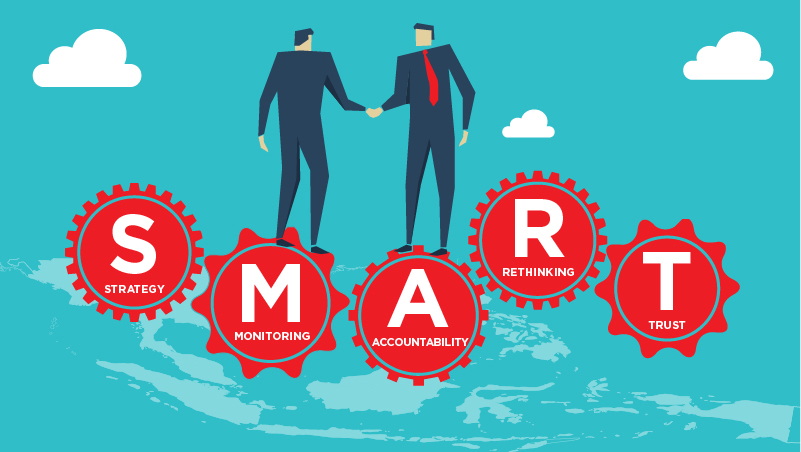As the ASEAN Economic Community (AEC) enters its second year, we examine how much progress has been made on economic integration, especially among the bloc’s emerging economies, as well as how ASEAN nations can close the income gap between themselves.

Towards the launch of the AEC at the end of 2015, some ASEAN emerging economies like Vietnam intensified the development of infrastructure and improved their regulatory transparency and accountability.
Vietnam's drive is fuelled by a strong government resolve to narrow the income gap between itself and the top ASEAN economies as the bloc moves towards integration, according to Associate Professor Vu Minh Khuong from the Lee Kuan Yew School of Public
Policy at the National University of Singapore.
The targets for Prime Minister Nguyen Xuan Phuc's ministries are clear and easy for all to understand, and Vietnam had a sense of urgency to see results, said Vu, explaining how the country is focused on going beyond just talk.
Analysts now view Vietnam, the host of this year's Asia-Pacific Economic Cooperation (APEC) summit, as being in a prime position to show leadership.
The Vietnam story is just one example of what some of ASEAN's emerging economies are doing to raise competitiveness and chase richer neighbouring economies as the region moves towards integration.
Overcoming challenges on various fronts
While other middle-tier ASEAN economies such as the Philippines and Indonesia are also pushing through development plans, the efforts of some of their peers have yet to gain traction.
The Doing Business rankings paint a picture of a diverse region. While Singapore ranks second globally, Myanmar sits at 170 out of 190 countries in the rankings.
Unsurprisingly, concerns remain over whether the younger ASEAN nations like Cambodia, Laos and Myanmar can bridge the development gap.
Although ASEAN leaders had hoped the region's nearly zero tariffs would stimulate trade to help narrow disparity, intra-ASEAN trade remains low with slow growth. Figures reached 24.2 per cent in 2013, but that was only a 5 per cent increase from two decades prior. Some ASEAN ministers, however, predict intra-ASEAN trade will reach 30 per cent by 2020, bolstered by the AEC initiatives.
Fluid changes in the external environment are also limiting the growth of poorer ASEAN nations. Some fear that the collapse of the Trans-Pacific Partnership (TPP), a trade deal expected to bolster manufacturing in ASEAN countries like Vietnam, and growing
protectionism by the current United States administration could dent AEC goals.
Tempering this gloomy view, Vu said the withdrawal of the TPP has spurred a reflection of sorts in Vietnam over how to mobilise its strengths and seek out new ways to boost development. Others should do the same, he felt.

One way for ASEAN's less developed nations to increase their economic competiveness is to raise their efficiency gains. To do this, Vu said they need to adopt an A.S.I.A.N. approach based on traits observed
from successful economies of Singapore, China, Japan, South Korea and Taiwan, meaning:
- Aspiration Countries must have this burning need for change
- Strategy Roadmap and objectives need to be clear for all involved to follow
- Implementation An agency with a clear plan of action needs to take charge and implement agreed initiatives
- Acquisition of knowledge
- Nurturing of human capital fostering human capital formation through upgrading the education system, better training workers, attracting talent, and making productive use of the workforce
2025 and beyond
However, just adopting this approach is not enough, said Vu. To narrow the disparity, he suggested other ideas. For instance, ASEAN nations could carve out niches to enhance their competitive advantage in specific sectors and pull foreign investors into
the region.
He cited the Philippines' edge in being the region's call-centre hub, given its low costs, high level of English literacy and ideal time zone for Western markets like the U.S. Another example he offered was how Singapore built up its petrochemicals into a global hub,
despite having no natural resources.

Offering another strategic policy model, Vu said working with a S.M.A.R.T. model could help ASEAN succeed in the AEC:
- Strategy This refers to the gathering of experts from across ASEAN to come up with ideas on how to prosper together. 'Strategy' means there has to be more teamwork with other ASEAN countries, Vu explained.
- Monitoring the goals of the AEC This could be done by a team of regional policymakers, academics and business leaders. We really have to think of the AEC as one economy, he said. This idea remains very fragmented. Largely,
people have no clue, yet the benefits are huge if you think about it as an economy of 620 million people with a combined GDP larger than India's.
- Accountability This could be in the form of an Agency' that is accountable for promoting and coordinating the AEC's progress.
- Rethinking Vu stressed that ASEAN nations have to making fundamental changes in the conceptual approaches and implementation measures to build the AEC into a highly integrated and competitive economy, leveraging the transformational
power of the digital revolution and the distinctive feature of ASEAN as a reform-minded and learning community.
- Trust He said that trust will play a crucial role in driving ASEAN to prosper and a special advantage ASEAN nations should nurture and leverage. In these efforts, wealthier ASEAN nations such as Singapore should play a more
proactive role in sharing expertise and experience. Singapore's successful development of seven large industrial parks across many provinces in Vietnam serve as illuminous example. These facilities have attracted nearly US$10 billion investment and
hired 180,000 workers.
Finally, governments and the private sector must work together to create more platforms for collaboration, according to Vu. He said either someone or a country in the region must take the lead, and there must be an honest sharing of best practices and
the genuine desire to learn from one another.
To sceptics who doubt that the benefits of the AEC will outweigh the costs given ASEAN's diversity, Vu praised the region as one of the most united trading blocs, despite its large and diverse socio-cultural and religious practices, as well as different
political systems. ASEAN nations have also shown that they can make strategic surprises in economic and political reforms, which benefit not only themselves but also the entire block and the region.
ASEAN is now facing the big challenge to moving from good to great, he said. This, however, also provides a unprecedented opportunity for ASEAN to make the region a development model for the 21st century, which is characterised by robust global
integration, sincere mutual respect, eagerness to learn from each other, daring attitude, and constant adaptability to change.